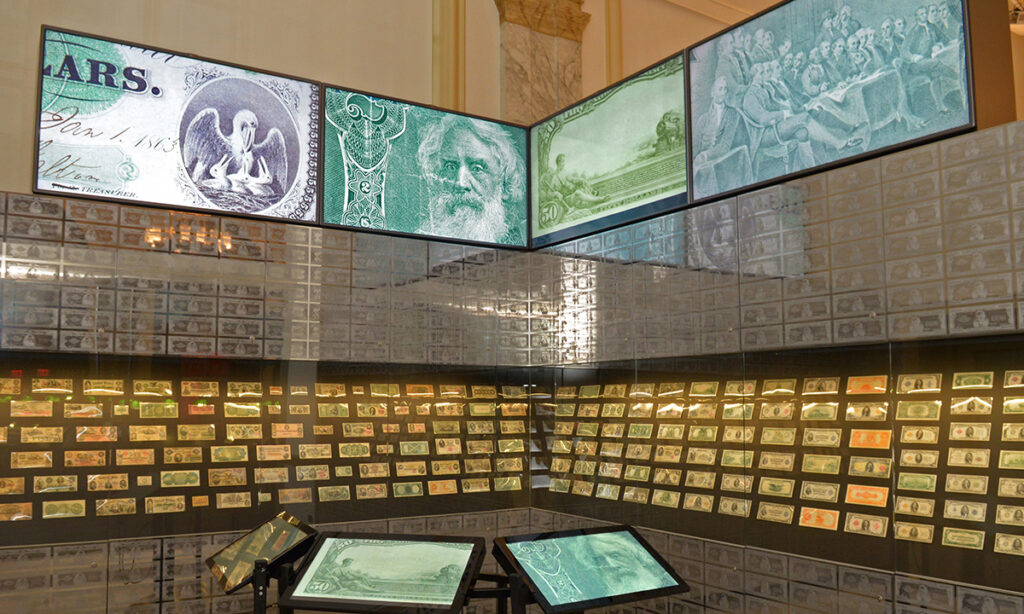Come July 1, 2026, Boston’s Seaport will welcome a new kind of tourist attraction, one that will be near and dear to the hearts of the PYMNTS audience: the Museum of American Finance. An affiliate of the Smithsonian Institution, this venerable institution is finally planting its flag in Boston after decades of wandering the country’s financial landscape, with its first permanent exhibit space outside of New York since 2018.
The museum will occupy approximately 5,400 square feet at Commonwealth Pier, a waterfront hub that’s transforming into Boston’s latest hotspot for dining, shopping and year-round programming. Founded in 1989, the museum has long been a custodian of the nation’s financial history, housing an impressive archive of documents, including some from the Founding Father himself, Alexander Hamilton. Its collection of 18th-century U.S. financial documents, letters, and records is a treasure trove for anyone who appreciates the gritty origins of American capitalism.
Since its move from Wall Street in 2018, the museum has been touring exhibits nationwide. Now, with a decade-long lease secured at Commonwealth Pier, the museum is set to become a permanent fixture in Boston’s cultural landscape. Its exhibits will be free to the public, reflecting its core mission to democratize financial education. While the museum’s existing collection is impressive, one can’t help but imagine some exhibits that would truly make it a must-visit for finance professionals — and perhaps give a cheeky nod to the darker corners of American finance history. To that end, here are seven exhibits we think the Museum of American Finance should consider:
The Dark Side of the American Dream
A provocative look at financial scandals, frauds, and the con men who have shaped — and shadowed — America’s economic narrative. Think Bernie Madoff’s Ponzi scheme, Enron’s corporate deception and the shady dealings of the 2008 credit crisis. It’s the “what could go wrong” exhibit, with a dash of schadenfreude.
Wall Street’s Villains and Vigilantes
Spotlight on infamous characters — both real and fictional — who embody the darker side of finance. From Gordon Gekko’s “Greed, for lack of a better word, is good” to the villains of the 1920s stock market crash, this exhibit would serve as a reminder that finance isn’t always about making money — sometimes it’s about avoiding prison.
The Money Laundering Lounge
An interactive display exploring the shadowy world of illicit finance — drug cartels, tax evasion, and offshore accounts — showing how the dark web and global networks keep the cash flowing in the wrong direction.
The Great Financial Panic of 1907
A re-creation of the panic that nearly brought down the nation, complete with a “run on the banks” simulation. It’s a reminder that even the mightiest financial giants are vulnerable to panic — and that sometimes, a few good men with a lot of money can save the day. For a modern equivalent, think Silicon Valley Bank.
The Rise and Fall of the Bubble
From the Tulip Mania of the 17th century to the dot-com bubble and crypto crashes, this exhibit would chart the cyclical nature of greed and speculation — complete with interactive “bubble bursts” and “investment roulette.”
The Art of the Financial Scam
A showcase of classic con games, including counterfeit banknotes, fake IPOs, and insider trading schemes. Think of it as an exhibit of deception — perfect for those who like their finance served with a side of skullduggery.
The Ethical Dilemmas of Finance
An introspective exhibit questioning the morality of high-frequency trading, payday lending, and the influence of money in politics. It’s the “moral compass” corner, reminding visitors that finance isn’t just about numbers — it’s about values.
In a way, these proposed exhibits could serve as a mirror — reflecting both the ingenuity and the pitfalls of American capitalism. It’s a chance to celebrate the pioneers like Hamilton while also acknowledging the con artists and fraudsters who remind us that finance, like all human endeavors, is imperfect. Whether you’re a banker, a regulator, or just a curious onlooker, this museum will be a must-visit with perhaps a few cautionary tales along the way. And who knows? Maybe it’ll even inspire a new generation of finance professionals to keep the dark side of the American dream in check.

